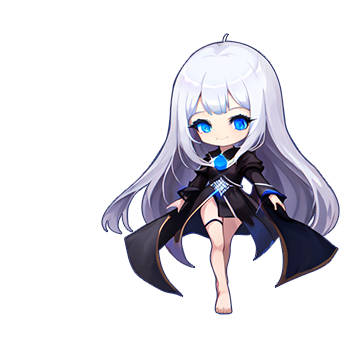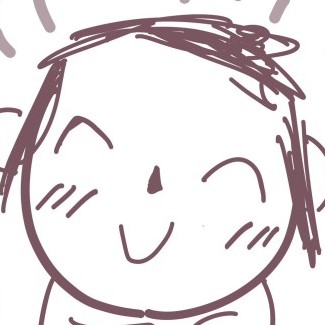Final Fantasy VII Rebirth Gameplay Overview
The second installment of the Final Fantasy VII remake project, titled "Final Fantasy VII Rebirth" (PS5), developed by SQUARE ENIX, was released on February 29th. Compared to its predecessor, this installment has seen significant improvements in various aspects. Let's explore the features of Final Fantasy VII Rebirth and what sets it apart from its predecessors!

Synopsis
The story of Final Fantasy VII is likely well-known to many veteran players. It revolves around the protagonist, Cloud, a former member of the elite Shinra task force known as SOLDIER, who joins the radical environmental group AVALANCHE in their mission to destroy the Mako Reactors that siphon Mako, the planet's lifeblood, from the earth. Along the way, they discover a greater threat in the form of Sephiroth, a former member of SOLDIER who seeks to summon a meteor to wipe out humanity. The protagonist and their allies embark on a journey to stop him, eventually leaving the city of Midgar and venturing into the wider world.

Fans familiar with the original game may notice deviations in the storyline of the previous installment, Final Fantasy VII Remake. Characters like Aerith possess abilities to foresee the future, and the party witnesses visions of Sephiroth's destruction of the world. Additionally, new enigmatic adversaries, such as the "Whispers of Fate," including a mysterious entity named "Fatewatcher," emerge to prevent alterations to the course of destiny. As the narrative progresses into Final Fantasy VII Rebirth, players will encounter further deviations from the original storyline, indicating a departure from the predetermined path of destiny.

A Brand New Open World Map
Unlike the previous installment, which confined players mostly within the city of Midgar, in "Final Fantasy VII Rebirth," we can embark on adventures across multiple large regions. After all, once we step out of Midgar in the original game, we encounter a vast world map. The development team has diligently recreated the original landscapes, including towns, villages, plains, and forests, all to scale. Seamless traversal from one end of the map to the story's conclusion area is now possible, a surprising improvement. What was initially thought to be segmented into large-scale sandbox worlds turned out to be interconnected.
Transitioning into an open world format naturally brings about significant changes in gameplay. This time, the map is expansive, teeming with monsters and numerous points of exploration.

Explore the World with Various Chocobos
With such a vast world, corresponding means of transportation are necessary for players. "Final Fantasy VII Rebirth" offers various Chocobos to accompany players on their adventures. Upon entering a new area, acquiring a Chocobo becomes a priority, as exploration without one would be slow. Each region features different types of Chocobos. Mountain Chocobos can scale vertical cliffs marked with specific symbols, Forest Chocobos can leap using giant mushrooms found in forests, Sky Chocobos can glide on air currents, and Sea Chocobos can hover using water jets, achieving greater heights over water surfaces. The diversity of Chocobos adds slight variations to exploration methods in each area, ensuring gameplay remains dynamic.
A New Crafting System for Items
Materials are scattered across the map, and defeating monsters also yields materials. Players can use these materials to craft items, including healing potions, armor, accessories, and more, provided they obtain the crafting recipes first. Crafting each item for the first time grants crafting experience points, which contribute to increasing crafting levels, allowing players to craft a wider variety of items. Material acquisition is balanced, eliminating the need for deliberate searches; materials are easily collected while exploring, and any deficiencies can be addressed by purchasing them at Chocobo farms.
New Character Skill Books and Weapon Upgrade System
This installment features a skill panel called "Skill Books," allowing players to use skill points (SP) to unlock each character's "Skill Cores" and enhance their offensive and defensive capabilities. Skill Books can be accessed at magical bookstores in towns or terminals at resting points, where players can spend SP points to learn new skills, including cooperative skills, abilities, and attribute powers. As the team's level increases, new areas within the Skill Books gradually unlock for players to acquire new skills. SP points can be earned through specific side quests, mini-games, and challenge activities. Team experience is gained by completing main storyline missions.

Diverse Mini-Games
"Final Fantasy VII Rebirth" offers an abundance of mini-games, each with multiple difficulty levels. If each mini-game were to be described individually, it would likely require a thousand-word article. Suffice it to say, the mini-games are plentiful and varied, offering enough content to entertain players for hours. The featured card game, "Blood of the Queen," is particularly enjoyable and could stand alone as a game in its own right, even incorporating special storylines within. It's definitely worth giving them a try.
Conclusion
"Final Fantasy VII Rebirth" is undoubtedly a game worth purchasing a PS5 console for. The dedication of the development team is evident throughout, even in scenes that might seem unimportant, which are presented with special events. The game incorporates numerous Easter egg storylines, some of which may require familiarity with spin-off novels or mobile games to fully appreciate. For loyal fans of the series, this adds to the overall experience.
Combat has noticeably improved and become more enjoyable, although the variety of ways to overcome challenges has made it somewhat easier. On the NORMAL difficulty setting, mainline battles can be easily won. Each area is rich in content; the author alone spent nearly 10 hours in the second chapter. The main storyline alone exceeds 40 hours, with completionists likely spending over 100 hours collecting all elements.
However, the camera performance in this installment leaves much to be desired. During battles, it's prone to getting stuck, and when traversing the map, the camera angle is sometimes too close. Additionally, frequent occurrences of simulated eye adaptation to darkness result in black screens, which significantly disrupt the gaming experience. Hopefully, these issues will be addressed in the final release, as they may discourage many players from exploring forested areas.













